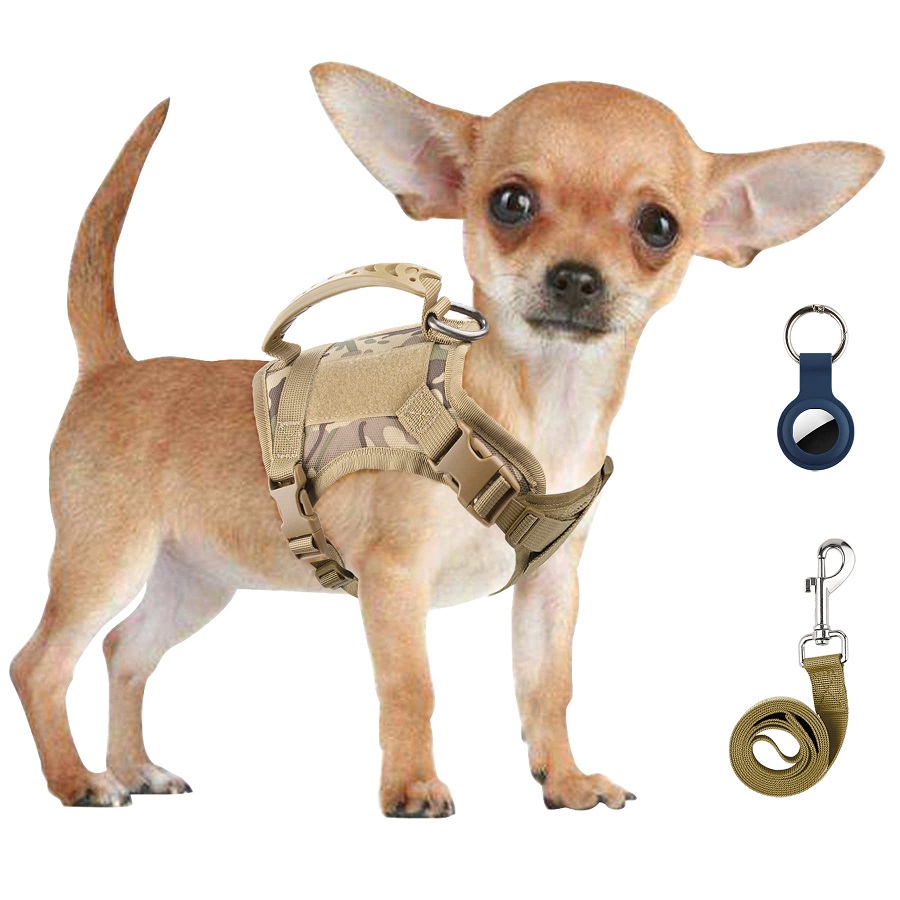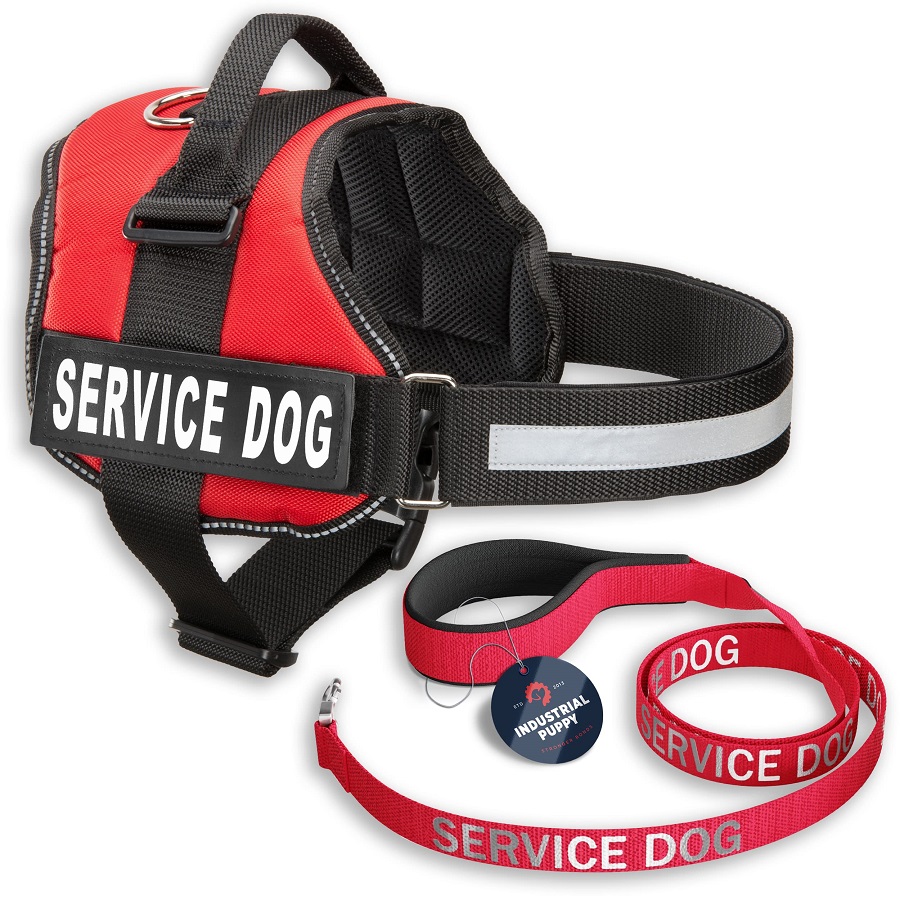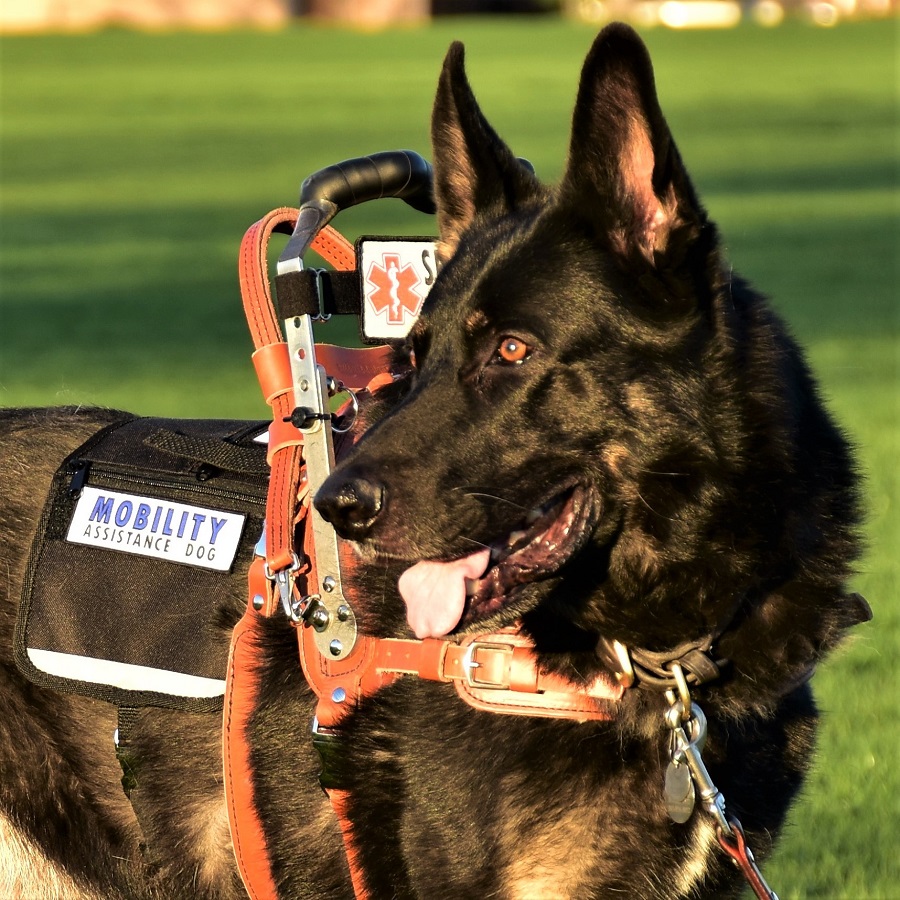Service Dogs vs. Emotional Support Animals
It’s crucial to understand the differences between service dogs and emotional support animals. While both offer significant benefits, their roles, legal status, and the protections afforded to them vary greatly.
Distinction and Legal Protections
Service dogs are trained to perform tasks directly related to their handler’s disability. The Americans with Disabilities Act (ADA) grants these dogs legal protections. This means they can accompany their handlers in public areas where pets are usually not allowed. Emotional support animals, on the other hand, provide comfort but are not entitled to the same level of access.
Training and Functionality Differences
Training for service dogs is extensive. They learn specific tasks to assist with disabilities such as mobility issues, blindness, or diabetes management. Emotional support animals do not require specialized training. They mainly offer emotional or psychological support. This distinction highlights their differing roles and the reasons behind their legal protections. Service dogs are considered working animals, whereas emotional support animals are recognized for their therapeutic value.

General Leash Laws for Service Dogs
Service dogs have specific leash laws they must follow. These laws ensure safety and proper behavior in public spaces. Under the Americans with Disabilities Act (ADA), service dogs must generally be leashed or harnessed in public.
ADA Guidelines on Leashes
The ADA requires that all service dogs be under control via a leash or similar restraint. This rule applies unless the leash interferes with the dog’s ability to perform its duties. In such cases, the handler must control the dog through voice commands or signals.
Circumstances Allowing for Leash Exceptions
Leash exceptions are allowed under specific conditions. For example, if a person’s disability prevents them from using a traditional leash, alternative control methods are necessary. Such exceptions are meticulously reviewed to ensure public safety and the effective performance of the service dog’s duties.
Roles and Responsibilities of Service Dogs
Service dogs play a crucial role in the lives of individuals with disabilities. They are trained to perform a wide range of tasks that improve the quality of life of their handlers and help them with daily activities. Their assistance can range from providing mobility support to alerting to medical crises, demonstrating how these animals are more than just companions; they are essential aids.
Assistance in Daily Activities for the Disabled
For someone with a disability, everyday activities that many take for granted can be challenging. Service dogs offer necessary assistance, enabling their handlers to navigate their day with greater ease and independence. These dogs may perform tasks such as opening doors, retrieving items, or providing stability and support for those with mobility impairments.
Specific Tasks and Functions
The specific tasks and functions of service dogs are tailored to the individual needs of their handlers. For instance, a service dog may be trained to recognize and respond to the onset of a medical episode, thus ensuring the safety and well-being of their handler. Service dogs also aid those with sensory disabilities like blindness or deafness, guiding them and alerting them to important sounds. The focus of training a service dog is to mitigate the impacts of the handler’s disability, with tasks that include but are not limited to providing physical support, navigating environments, and fetching items that are out of reach.

Leash Training for Service Dogs
Leash training is crucial for service dogs. It ensures they can navigate public spaces safely and without causing disruption. This training also helps maintain the dog’s attention on their handler, despite distractions.
Importance of Obedience and Focus
For service dogs, obedience and focus are vital. They learn basics, like ‘sit’ and ‘stay’. These commands help them act safely and predictably in public. Trainers also emphasize the need for the dog to pay attention to the handler at all times.
Standards of Behavior While on a Leash
Service dogs must behave properly when leashed. They should not pull, lag, or circle. Good leash behavior shows that the dog can perform its duties without causing trouble or harm. It also reflects the effectiveness of their training and their capability as a service animal.
Rights and Accessibility for Service Dogs in Public
Service dogs play a critical role in assisting individuals with disabilities. Hence, these dogs enjoy broad rights to public access under the Americans with Disabilities Act (ADA). This law ensures they can accompany their handlers in most public and private spaces.
Public Access and Anti-Discrimination Policies
The ADA mandates that service dogs access public areas where other pets might not be allowed. This right helps individuals with disabilities partake in public life more fully. Importantly, businesses and public facilities cannot discriminate against a person because their disability requires a service dog.
Service dogs should be allowed entrance to all public spaces. Their presence in these spaces ensures that individuals with disabilities enjoy the same rights and conveniences as others. However, it’s essential for service dog handlers to ensure their dogs behave and respond well in public settings.
Situations in Which Service Dogs Can Be Asked To Leave
Despite the broad protections afforded by the ADA, there are specific situations where a service dog might be asked to leave a public space. If a service dog behaves disruptively, and if the handler cannot control the dog effectively, the establishment has the right to ask the dog to leave.
Another instance is when a service dog’s presence fundamentally alters the nature of a service or facility. For instance, if safety risks are significantly increased by the dog’s presence. However, these situations are exceptions rather than the rule, and staff must still provide their services to the individual with a disability, even if the dog is excluded.

Handling and Control of Service Dogs
Service dogs must be well-controlled in public. This ensures safety and proper behavior. Handlers need to maintain control for the dogs to perform their duties effectively.
Importance of Maintaining Control
Keeping service dogs under control is key. It prevents accidents and helps them focus on tasks. Control also shows the public that service dogs are working animals, not pets.
The Role of Equipment in Assisting with Control
Different control tools assist handlers. Leashes, harnesses, and vests can help in maintaining control. These tools also signal to others that the dog is a service animal. Proper equipment ensures service dogs can work without distractions or risks.
Situations Allowing Off-Leash Service Dogs
Service dogs may work off-leash under specific conditions established by the ADA. These exceptions ensure the dog can perform tasks effectively without the restraint of a leash. These situations cater to the unique needs of the handler and the duties of the service dog.
Exceptional Circumstances for Off-Leash Activities
Circumstances that permit off-leash activities primarily revolve around the nature of the disability and the tasks required. If a leash hinders a service dog from performing essential tasks, such as fetching medication or navigating obstacles, the ADA allows for an exemption. For instance, if a handler’s mobility severely limit, the service dog may need to operate without a leash to access areas quickly and efficiently. Handlers still expect to maintain control of their dogs through voice or signals, ensuring safety and responsiveness.
How Off-Leash Service Dogs Ensure Safety
Off-leash service dogs highly train to stay focused and act reliably in diverse environments. This training ensures that they can navigate public settings safely, even without physical restraint. The primary goal is to ensure the handler’s safety and to provide the necessary assistance effectively. These dogs train to avoid distractions and to return promptly to their handlers after completing their tasks. Their ability to work off-leash highlights their advanced training and the trust placed in them by their handlers and the public.
The Impact of Service Dogs on Society
Service dogs not only aid individuals; they shape societal views on disability.
Raising Public Awareness
Public knowledge about service dogs is less than ideal. It’s vital to educate people on the differences between service dogs and pets. Misunderstandings can create barriers for those who rely on service animals. Efforts to increase awareness can reduce these issues. Campaigns and education programs can inform the public on service dog roles and rights.
Respect for service dogs and their handlers is crucial. Awareness helps ensure these teams face fewer challenges in public. This awareness also curbs misuse of service dog labels by those with pets. Responsible behavior around service dogs needs reinforcement. It is inappropriate to distract service dogs when they are working. Teaching this is beneficial.
Contributions to Quality of Life Improvements
Service dogs significantly boost their handlers’ living standards. They provide more than just companionship. They enable independence for people with varied disabilities. From guiding the blind to aiding those with seizures, their roles are comprehensive.
By performing tasks their handlers can’t, service dogs grant freedom. This increases the opportunity for handlers to engage in society. These animals help their handlers join more activities. Work life, social events, and independent living are accessible. The effects reach beyond immediate help. Confidence and mental well-being often improve. Life becomes richer with a service dog. Society gains from the inclusion of all its members.










